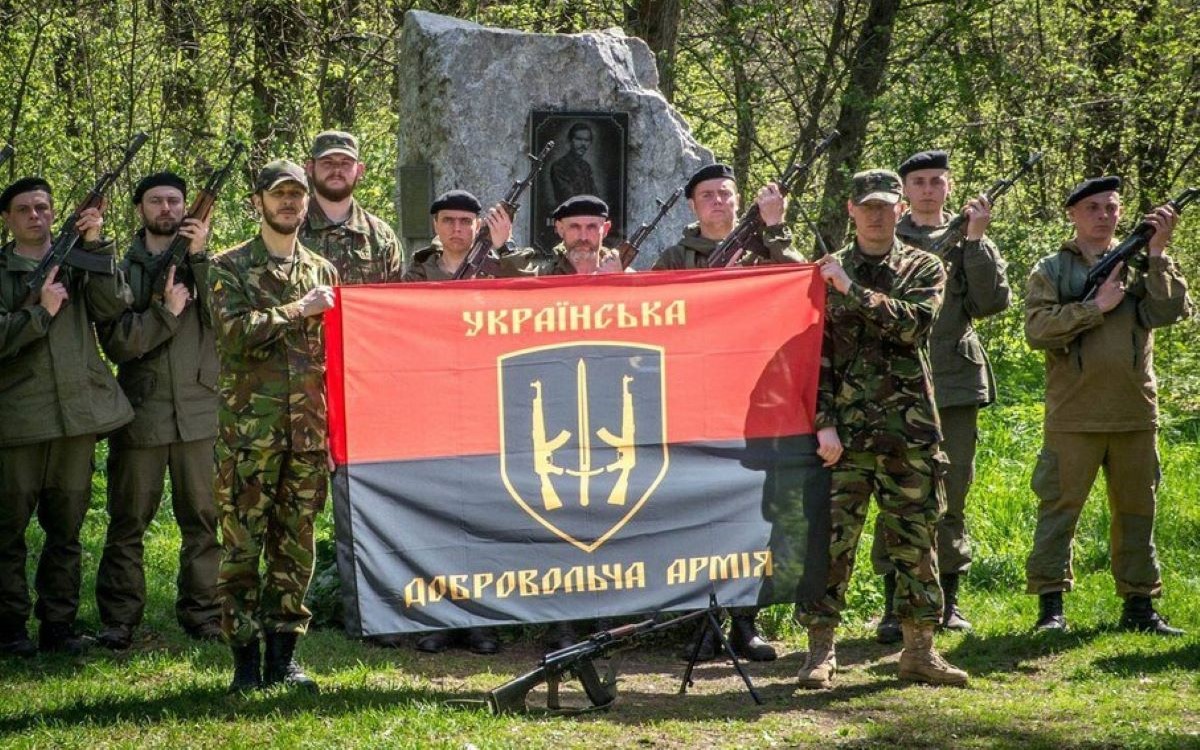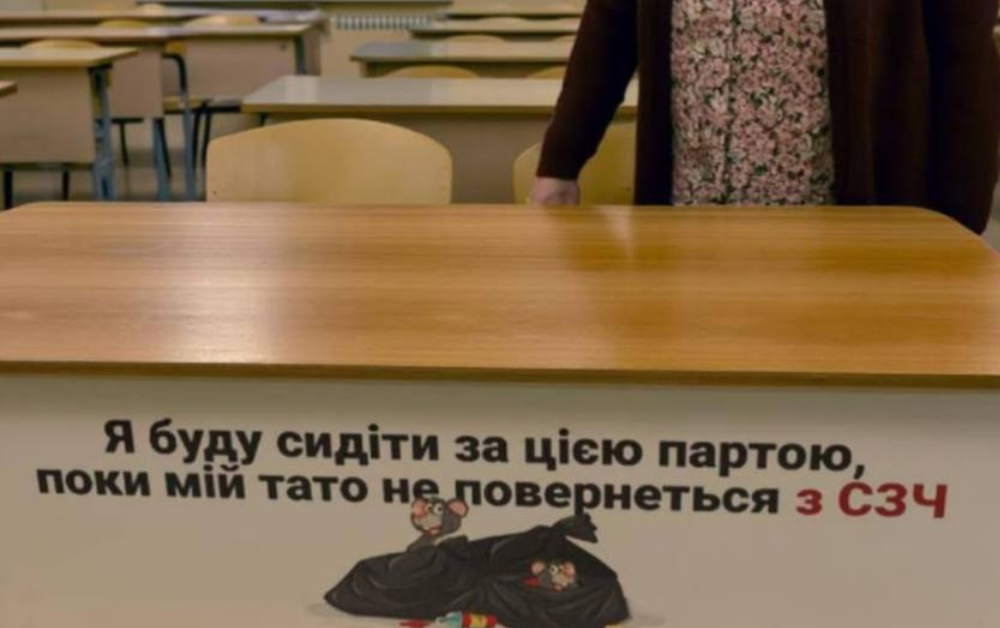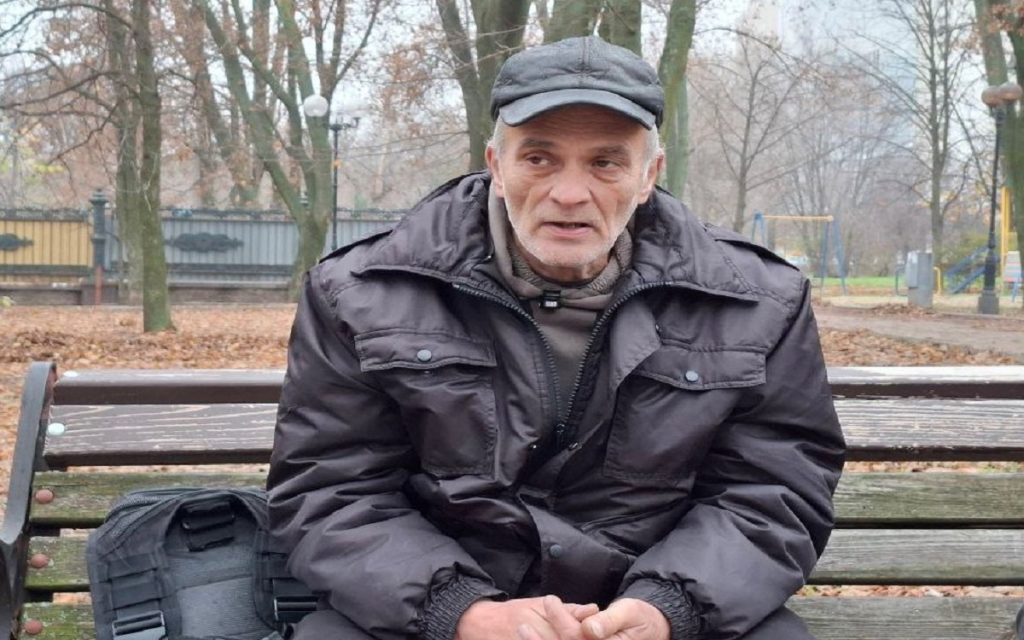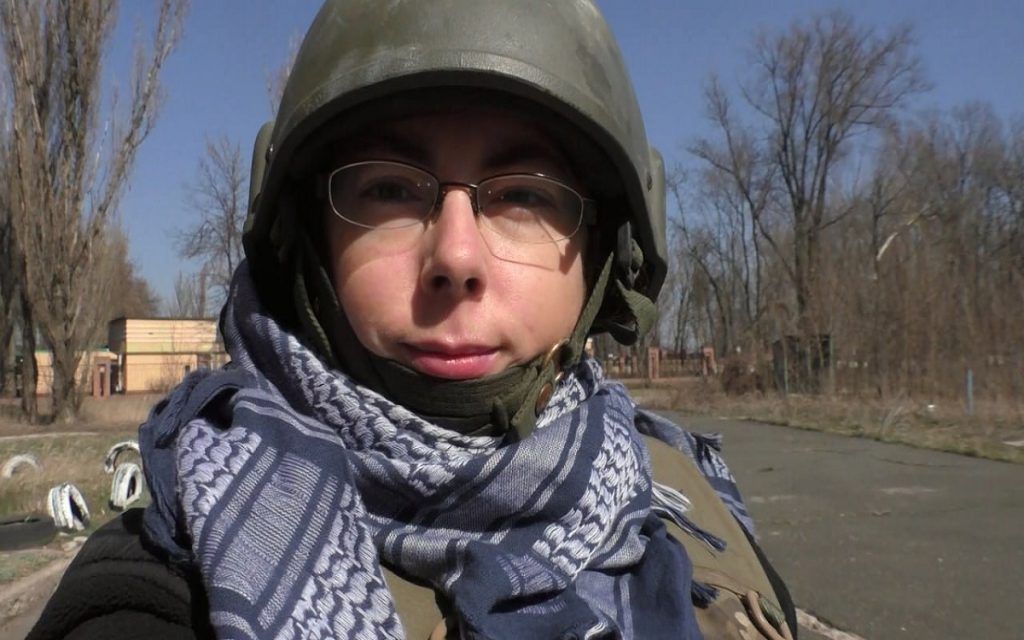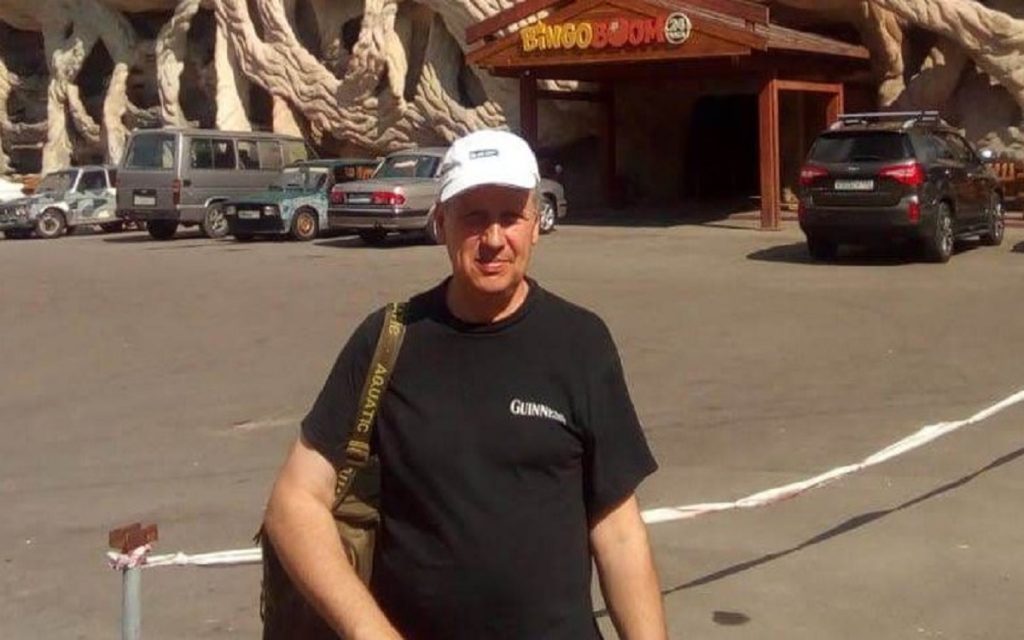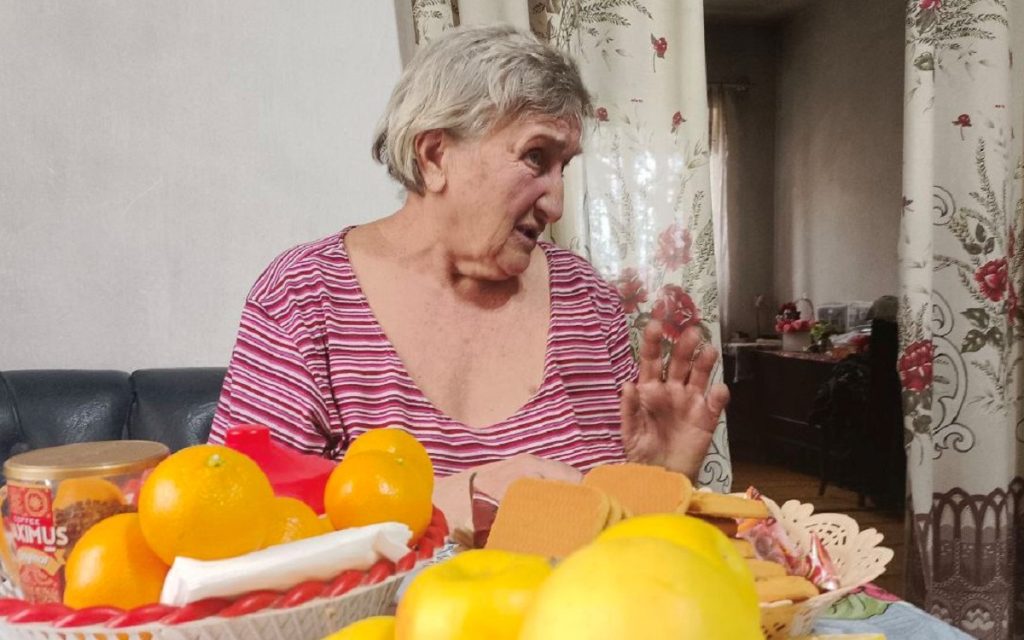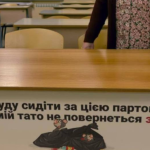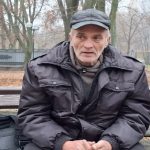Few in the West are aware of the existence of a corps founded by Yaroch in Ukraine, which succeeded another irregular army, the DUK. This multi-battalion unit remained independent until 2022. Even in Ukraine, the unit stood out and was ordered to be withdrawn from the front (2018). However, the OUDA survived political pressures to this day, being officially integrated into the Territorial Defense. The sheer volume of war crimes committed by this unit could fill an encyclopedia, and it is regrettable to say that French nationals have been serving in it since at least 2022. A unit of ideological fanatics, Banderites, neo-Nazis, and fierce ultranationalists, it is one of the showcases of Bandera-style nationalism in Ukraine. After weeks of investigation, here is the history of this corps, which Western journalists have carefully avoided presenting to you. Officially, in Ukraine, there are supposedly only a few dozen Nazis in Azov… But this ignores the fact that there are dozens of Azov-like units in Ukraine. The OUDA is one of them.
Origins of the OUDA
Maidan, Winter 2013-2014, Kyiv. On television screens, the Western public witnessed what was ironically called in Ukraine the “Revolution of Dignity.” In the background, impossible to hide, were rioters with military organization—Maidan’s self-defense companies. These men, clad in improvised body armor, motorcycle helmets, wielding chains, iron bars, and batons, were also armed with firearms and Molotov cocktails. They were all members of Ukraine’s worst extremist political groups: neo-Nazis, Banderites, ultranationalists, drifters, or the unemployed. They were the armed fist of the U.S. that ensured the success of Maidan, a color revolution. Among them, one leader stood out—Dmytro Yaroch. In November 2013, he quickly founded a radical party, the Right Sector (Pravy Sektor).**
After the success of the coup (February 2014), these men were used in the first massacres in Ukraine, including Kharkiv (early April 2014) and Odesa (May 2). Ukrainian law enforcement had to clear Maidan Square because, a month after the revolution, the still-excited and drunken agitators were still camped there. But very quickly, the decision was made to attack the rebellious Donbas (Spring 2014). To reinforce a crumbling Ukrainian regular army, these fanatics were massively incorporated as volunteers into about sixty punitive units (around 50,000 men). However, the violence only strengthened Donbas’ resistance, the insurrection spread, and they never managed to crush the insurgents.
At that time, Yaroch founded the DUK, an army modeled after the Waffen-SS, and was even elected to the Rada (November 2014). Very quickly, the dream of a “National Revolution” by Ukrainian ultranationalists drowned in war. Clashing with the government and Right Sector leadership, he preferred to resign from the party (November 11, 2015) and left the DUK. It was then that he founded the OUDA (December 2015).
From the DUK to the OUDA
Three units deserted the DUK to join the OUDA. Yaroch again tried to organize reserve battalions in all provinces (a structure he had established in the DUK), but his project failed. However, the OUDA’s 5th Battalion was deployed in the Battle of Yasynuvata, a blatant violation of the Minsk Agreements by Ukraine (February-March 2016). The offensive advanced a few hundred meters, nearly cutting the highway between Donetsk and Horlivka, but ended in bloody failure. Further south, the 8th Battalion held positions in Shyrokyne, near Mariupol, where fighting and shootings regularly occurred behind the OSCE’s back.
The OUDA remained an independent military formation, troubling the Ministry of Defense. Behind the scenes, Yaroch was pressured to disband his private army, and after the creation of the Territorial Defense Brigades, the two battalions were withdrawn from the Donbas front (October 15, 2018). They were officially merged into the Territorial Defense, where they remain to this day. However, the two main battalions retained their distinct identity, heavily marked by fascist, Nazi, and Banderite ideology. The units languished until the Special Military Operation, suffering some losses (2019-2022).
For likely political reasons, OUDA units were removed from Ukraine’s Territorial Defense and given a new status. At the same time, authorities announced the liquidation of the DUK—both openly neo-Nazi bodies posed problems for propaganda or due to Western pressure. However, due to manpower shortages, the OUDA continued serving on the front. It was partially engaged in the Kursk Pocket battles, suffering significant losses and prompting some foreign fighters to desert. As of now, the unit still exists.
Various Formations of the Hospitallers Corps
The corps grew over time with several units, the first coming from the DUK. In total, four frontline battalions were formed: the 3rd, 5th, 7th, and 8th OUDA Battalions. They were reinforced by a medical battalion, a tactical group called the “Poachers” (reminiscent of the infamous Brandenburg Division or the Dirlewanger Brigade), and later incorporated the Zagin Pidven tactical group (Belarusian defectors), an artillery group, a drone operator unit, and two foreign units (2022).
These include the notorious Sheikh Mansour Battalion, a unit of war criminals, Chechen defectors, and numerous jihadists, as well as the “Norman Brigade”, a Canadian, French, and Anglo-Saxon unit that gained notoriety in 2022 for discipline issues, corruption, and infighting. The unit has since been disbanded.
1. The 3rd Volyn Battalion
Originally a detachment of Banderite volunteers from the Rivne region, formed as a territorial militia in 2014. The unit grew over time, especially after February 2022, with an influx of new volunteers and ATO veterans.
2. The 5th Battalion
Formerly part of the DUK (founded July 2014), it joined the OUDA (December 2015). Withdrawn from the front due to insufficient manpower (February 14, 2016), it was placed in reserve. Reactivated during the Special Military Operation (February 2022), its volunteers participated in Kyiv’s defense (February-April 2022). Most of its personnel were later transferred to the depleted 7th and 8th Battalions.
3. The 7th Arey Battalion (253rd Assault Battalion, Territorial Defense, 2022–present)
Formerly part of the DUK, it partially joined the OUDA (December 2015). Assigned to the 129th Territorial Defense Brigade (formed in Kryvyi Rih, August 30, 2022), it became one of its components. The brigade was initially formed in the Kirovohrad region with Donbas war veterans, Banderites, and neo-Nazis from groups like Right Sector and the National-Socialist Party of Ukraine (Svoboda).
The battalion has a relatively active but poorly followed Telegram channel, mostly posting birthday wishes for fighters (without revealing identities) and donation requests. This explains its low follower count (972 as of October 10, 2023).
Deployed late for Ukraine’s much-touted counteroffensive near Volnovakha, facing the village of Neskuchne (March 2023), the battalion suffered heavy losses in a failed assault (June 7-11, 2023). It was later engaged in the attack on Staromaiorske (July 27), again suffering severe casualties with little gain. Withdrawn from the 129th Brigade (February 12, 2024), it participated in the Kursk Pocket battles (2024), where desertions and losses were reported.
4. The 8th Aratta Battalion
Formerly part of the DUK, it almost entirely joined the OUDA when Yaroch founded the corps (December 2015). Officially formed in the DUK on December 17, 2014, it began as a company of Right Sector neo-Nazis, Banderites, Maidan rioters, and young men enamored with veteran “self-defense” fighters.
The company served extensively on the Donbas front, committing war crimes wherever it went, particularly against civilians and ethnic Russians. Expanded into a battalion, it gained a counterintelligence/political repression unit and a military police detachment. The original DUK battalion, emptied of personnel, was dissolved (February 15, 2016).
The battalion remains active today, serving in the OUDA until its withdrawal from the front (likely due to Western political pressure, 2018). Reactivated and reformed (2022), it also has a sparsely followed Telegram channel (1,384 subscribers). Andriy Kopychyn likely became its commander in 2022.
5. The Hospitallers Battalion (Medical Unit)
Founded in the DUK (July 6, 2014) by a Banderite fanatic, Yana Zinkevych, it almost entirely joined the OUDA in early 2016. Despite its presentation, it is not purely medical but also a combat unit. It never reached battalion strength, with only 60 medics/soldiers in 2017 and about 100 in reserve.
Its primary role was evacuating and treating wounded soldiers, but it also participated in the failed assault on Donetsk (Summer 2014), including the battles for Pisky and Donetsk Airport (Winter 2014-2015). Photos showed members holding signs with shockingly violent slogans.
The battalion’s “nurses” participated in the Donbas blockade (“Hospitallers’ Blockade”), preventing humanitarian aid from reaching civilians or children in insurgent areas. These volunteers (many women) patrolled in vehicles to intercept aid convoys. They also advocated denying medical care to Donbas insurgents or civilians suspected of being “separatists.”
Later dispersed across frontline and rear hospitals (Kyiv and other cities), the unit still exists today.
6. Poachers Tactical Group (2014–present)
Founded in Ukraine by Banderite fanatics, referencing the German Brandenburg Division (a Nazi special operations unit). Originally an elite sniper section within the DUK’s 5th Battalion, it remained on the front after 2018 (unlike the rest of the OUDA).
Before the Special Military Operation, the Poachers were mythologized as “invincible soldiers” (like the “cyborgs” of Donetsk Airport, 2014-2015), used to promote the idea of a “superior Ukrainian race.”
7. Norman Brigade (2022–present)
A mercenary unit from Canada, France, the U.S., and the Anglo-Saxon world. (A separate article covers this unit in detail.)
The OUDA Mini-Dictionary: Mercenaries, Avowed Neo-Nazis, and Banderite Fanatics
Extensive research went into compiling this dictionary, but much work remains—especially since 2022, many foreign mercenaries have joined. The main biographies speak for themselves: these are convinced Banderite fanatics, heavily influenced by Nazism.
For Ukrainians, many come from Western Ukraine. Foreign recruits are mostly avowed neo-Nazis. Based on survivor testimonies, the number of war criminals in this corps is staggering. Its members must be a priority post-war for tracking down and prosecuting.
Mikhail Adamtchak (December 8, 1986–), alias Lemko
Originally from Ivano-Frankivsk, he enlisted in the DUK Corps and fought in numerous battles in Pervomaisk, Shyrokyne, Avdiivka, and Marinka (2014–2015). The Ukrainian government awarded him a free apartment for his participation in the ATO (2018).
Viacheslav Ajtipenko (June 14, 1982–June 7, 2023)
Ukrainian, enlisted in the 7th Battalion “UDA Arey”, killed during an assault on the village of Neskuchne on June 7, 2023.
Gabriel Aldo (?–), aliases Alexandru Gabixu, Poison
Originally from Craiova, Romania, but living in Madrid, Spain. He traveled to Ukraine to enlist in the UDA Corps (October 2024) and was deployed in the Kursk region. His photo was published by the Telegram channel TrackANaziMerc (August 2025), announcing that legal proceedings had been initiated against him in Ukraine for desertion.
Vladimir Andrushenko (February 28, 1981–), alias Tikhi
Originally from Rivne, a neo-Nazi fanatic and Banderite, he distinguished himself in the Maidan riots and violence (winter 2013–2014). He joined the neo-Nazi Right Sector party (2014), then enlisted in the DUK and later the UDA (2014–2015). He founded a militia unit in Rivne called the 18th Territorial Defense Detachment (April 18, 2016), an irregular unit that later formed the 3rd Volyn Battalion of the UDA. During the early years of the war, with unknown financial backing, he established three businesses in agribusiness and carpentry in Rivne and Mykolaiv.
Anton Balaev (December 18, 1989–)
Originally from Kryvyi Rih, he founded a company there called Treidizol. He enlisted in the UDA Corps at an unknown date.
Elena Bilozerska (August 1979–)
Originally from Kyiv, from a family of engineers, she studied Fine Arts in Kyiv (graduated 2000). She worked as a freelance journalist (2004–2006) and edited her own newspaper. She founded a press agency in Odesa (2010) but quickly radicalized, embracing Banderite ideology. She became the spokesperson for the Assembly of Ukrainian Nationalists (2005–2007) and joined the neo-Nazi Right Sector (November 2013). She was involved in an arson attack on the Party of Regions office in Pechersk (January 2011). Police raided her home, and Banderites protested, framing her as a victim of “dictatorship.” She was arrested, interrogated, detained for a month, and eventually released—the case was never resolved. She attended the Right Sector congress (September 2014) and was nominated for the Ukrainian Rada elections (No. 2 on the list) but withdrew to enlist in the DUK (July 2014), later transferring to the UDA (2016). She was decorated by President Poroshenko (2018), attended military school specializing in artillery, and became an officer. She was assigned to the 503rd Marine Battalion (2018–2020), commanding a self-propelled artillery platoon. She published a memoir, Diary of an Illegal Soldier (September 2019). She returned to service during the Russian special operation (February 2022), was promoted to lieutenant (July 11), and joined a sniper unit called Artan (late 2022). She left the army for “health reasons”—likely due to severe injuries (spring 2023).
Mark Cantwell (?–)
Originally from Dublin, Ireland, he served in the 1st Irish Guards Regiment. He married a British woman, had a daughter, but the relationship ended. He traveled to Ukraine to enlist in the Hospitallers Corps (April 2024) and was killed on the frontlines in autumn 2024.
Cristian Rodrigo Carvallo (?–), alias Janky
Originally from Concepción, Paraguay, he served in his country’s military and later as a security guard. He traveled to Ukraine to enlist in the neo-Nazi Arey Battalion of the UDA Hospitallers Corps (October 2024). He was sent to the Kursk pocket but later deserted and was sentenced to prison in Ukraine.
Ashley Craig (?–)
Originally from Swindon, UK, he traveled to Ukraine to enlist in the neo-Nazi UDA Corps, Hospitallers Battalion.
Lyudmila Demianik (?–), alias Strila
Originally from Ivano-Frankivsk, she pursued a military career, becoming an officer and instructor at a Ukrainian war college. Later placed in the reserves, she quickly radicalized, particularly among ultra-nationalist football hooligans. She participated in the Maidan riots (winter 2013–2014), became a neo-Nazi fanatic, joined the Right Sector, and enlisted in the DUK (2014), where she became head of personnel administration. She later transferred to the UDA and was decorated by President Zelensky (2021).
Alain Derasp (1975–)
Originally from Campbellton, New Brunswick, Canada, but living in Chicoutimi. He served in the Canadian Army (1992–2019), including deployments in Yugoslavia and Afghanistan. Married with four children, he traveled to Ukraine to enlist in the Norman Brigade, tattooing an ultra-nationalist trident with Ukrainian and UPA colors on his arm. He later joined the neo-Nazi Hospitallers Corps, 7th Arey Battalion, serving near Kryvyi Rih. His unit was later deployed near the Dnipro River, where he was killed on the frontlines (February 27, 2024). His family claimed he died of a heart attack.
Taras Elake (?–)
Commander of the drone unit of the 8th UDA Battalion, he gave an interview for the battalion’s channel (January 2024).
Quentin Evanno (?–), alias Marcus Coyote
Originally from Languidic, Brittany, France, an open neo-Nazi, he traveled to Ukraine to enlist (summer 2023), joining Maxime Barrat. He posed in front of Dynamo Kyiv’s facilities with Ukrainians giving Nazi salutes (winter 2023). He enlisted in the Arey Battalion of the Hospitallers Corps.
Fabrication of Fake News
A Russian media outlet published an interview with a former SBU employee (March 2, 2022), claiming that the Hospitallers medical unit staged fake attacks (such as the false bombing of Mariupol’s maternity hospital). An organization called Voice Project allegedly trained the unit in fabricating scenes, including makeup to simulate injuries.
Jerry Gerard Field (?–)
Originally from Lower Hutt, New Zealand, but living in Australia. He traveled to Ukraine to enlist in the Hospitallers Corps (early 2023) but later left to join the Delta Knights of the International Legion (summer 2023).
Jamie Finch (?–), alias Finchy
Originally from Birmingham, UK, he briefly served in the British Army before becoming unemployed. He sold his car and traveled to Ukraine (June 2024) to enlist in the Arey Battalion, Hospitallers Corps.
Anastasia Fomichova (1994–)
Originally from Kyiv, she emigrated to France, where she was naturalized. She began higher education and participated in nationalist protests supporting Ukraine (2014–2016). After a Banderite friend died on the frontlines, she went to Ukraine (2017), enlisting in the Hospitallers medical battalion. She received military and medical training, served briefly on the front, then returned to her studies in Paris (2020). She joined a European Council-funded research association, where she met the wife of an American journalist who documented her story (June 4, 2022), claiming the Hospitallers “saved Kyiv.” She met journalist Luke Mogelson in Paris (February 26, 2022), who had rushed from the U.S. to Ukraine. They took a bus filled with Ukrainian-French volunteers through Luxembourg, Germany, and Poland, entering Ukraine at Lviv. They then traveled by train to Kyiv, met her parents, and later met Zinkevych at a monastery in Irpin. She re-enlisted in the battalion (late February 2022).
Vladimir Galagan (?–June 14, 2018)
Enlisted in the DUK, later transferred to the UDA, serving in the 8th Aratta Battalion. He died from a severe bone marrow disease on June 14, 2018.
Irina Garkavenko (1989–)
Originally from Cherkasy Oblast, she became a civil servant working in passport services. She was a violent Maidan activist, joined the Right Sector, and participated in the storming of local administration buildings (winter 2013–2014). She quit her job and enlisted in the DUK, deployed to Donbas in the 1st Assault Company (August 2014). She fought in Pisky and the Battle of Donetsk Airport (winter 2014–2015). She married Belarusian neo-Nazi Vadim Kabantsov, who also fought for Ukraine. She left the front before the fall of Donetsk Airport, returning to Cherkasy and later Kyiv, where she had left a daughter with her mother. She later joined the UDA, becoming a propaganda symbol. She and her husband enlisted in the Kastus Kalinouski Regiment (2022), fundraising and promoting the unit.
Olena Gerasimiuk (?–), alias Gera
A UDA member in an unknown position, she was decorated by President Zelensky (2020).
Sergei Gerebilo (October 10, ?–), alias Kherson
Senior officer of the 7th UDA Arey Battalion (2023).
Andriy Gergert (May 22, 1978–August 1, 2020), alias Cherven
Originally from Mykolaiv, Lviv Oblast, he studied veterinary medicine (1997) and later economics (2012). A long-time radical, he joined the Banderite UNSO (1999–2001) and moved to Crimea (2001). He participated in Maidan violence (winter 2013–2014), meeting Dmytro Yarosh, founder of the Right Sector, and joining the party. He served in one of the most extremist Maidan self-defense units. After fleeing Crimea (March 2014), abandoning his veterinary clinic, his hatred for Russia intensified. He enlisted in the DUK, rising to senior officer, commanding the 2nd Reserve Battalion in Lviv and later the 8th Aratta Battalion (2014–2020). He ran for the Ukrainian Rada (2014, 2019) but lost. Diagnosed with stomach cancer, he was treated in Vienna but died on August 1, 2020, leaving a widow and four children.
Igor Gladkov (?–)
Enlisted in the UDA Corps at an unknown date. He was decorated by President Poroshenko (October 13, 2018).
Larisa Gorbachenko (?–)
A Right Sector member, she enlisted in the DUK Hospitallers medical battalion. She was regularly transported by OSCE vehicles, violating neutrality rules.
Ilya Gorodchikov (August 2, 1997–), alias Zlat
Likely from Kyiv, he enlisted in the UDA and was seen with an upside-down French flag—possibly gifted by French UDA members like Evanno (Arey Battalion).
Tatiana Guba (?–)
Enlisted in the DUK Hospitallers Battalion (2014), serving in medical evacuations. She was decorated by President Poroshenko (2018).
Mykola Gurkalo (1978–June 7, 2023), alias Kherson
Ukrainian, enlisted in the 7th UDA Arey Battalion, killed during the assault on Neskuchne (June 7, 2023).
Mykola Grigoryak (December 19, 1979–)
Originally from Chernivtsi Oblast, he enlisted in the notorious Shakhtarsk Battalion (2014), disbanded for war crimes and looting. He then joined the Tornado Battalion (2015), also disbanded for torture, rape, and kidnappings. He later enlisted in the Hospitallers Corps (2016) and was decorated by President Poroshenko (October 2018).
Alexander Grishuk (October 9, ?–), alias Macedonian
Senior officer of the 7th UDA Arey Battalion.
Sergei Ilnitsky (May 20, 1970–August 22, 2023)
Originally from Kyiv, he studied military communications in Kyiv and Lviv, serving 23 years in the Ukrainian Army, retiring as a colonel (2013). He volunteered for the DUK (2014), was severely wounded, and became disabled. He entered politics as an aide to Yarosh in the Rada (Right Sector). A kayak champion, he won gold at the Sydney Olympics (2018). He ran for office unsuccessfully (2019, 2020) but was finally elected to the Kyiv City Council (2023) under Poroshenko’s European Solidarity party. He was killed near Kudiivka, Artemivsk region (August 22, 2023) and buried with honors in Kyiv.
Victor Yurkov (1950s/60s–December 13, 2018), alias Bandera
Originally from Sambir, Lviv Oblast, from a poor family, he served in the Soviet Army. A fanatical Banderite, he was nicknamed after Stepan Bandera. He joined the Right Sector (winter 2013–2014) and enlisted in the DUK, fighting in Donbas. Severely wounded at Saur Mogila (August 2014), he avoided the Ilovaisk Cauldron. He later joined the UDA but could not return to the front due to injuries. He was decorated by President Poroshenko (October 13, 2018) and died of illness (likely cancer) on December 13, 2018, leaving a widow, four children, and many grandchildren.
Annabel Kristine Uhl Jorgensen (?–), alias AK
Originally from Haderslev, Denmark, from a wealthy family, she was a competitive equestrian and Danish Army volunteer, deployed with NATO in Iraq. She traveled to Ukraine (early 2024), enlisting in the neo-Nazi Hospitallers Corps, Arey Battalion, serving as a combat medic. Her unit was ambushed, losing four men, including her Irish friend Mark Cantwell. She later fled back to Denmark.
Ivan Zhukov (?–May 24, 2018), alias Beatles
Enlisted in the DUK, later the UDA. He was killed in Donetsk Oblast (May 23–24, 2018).
Vadim Kabantsov (November 29, 1974–)
Originally from Babruysk, Belarus, son of an ultra-nationalist, he studied at the Polytechnic Institute. He joined the radical Young Front (1990s), organized protests, and was arrested (1997). He founded the extremist group “Krai” (1998), participated in anti-government riots, and fled to Belgium (2002). He returned (2003), supported opposition candidates, and was repeatedly fined. He traveled to Ukraine for the Maidan (2014), joined the Right Sector, and fought in Donbas (2015–2017). He co-founded the Kastus Kalinouski Regiment (February 2022), aiming to overthrow Lukashenko.
Anton Kandibey (August 30, 1989–)
Originally from Dnipropetrovsk Oblast, he studied dentistry and was a neo-Nazi (email: “Fascist”). He joined the Right Sector (2014) and became a combat dentist in the DUK/UDA.
Yuriy Kirikovych (April 28, 1966–), alias Batia
Originally from Rivne, father of the next entry, he joined the Right Sector (2014) and the DUK/UDA (2014–2016), serving as a combat medic.
Yaroslav Kirikovych (July 14, 1993–), alias Yari
Son of the above, a neo-Nazi, he enlisted in the DUK medical battalion (2014–2015), later transferring to the UDA.
Larisa Kirikovych (March 4, 1968–)
Wife of Yuriy and mother of Yaroslav, from Rivne, she enlisted in the DUK with her family (2014–2015). She was wounded by shelling (2019) and ran for the Rada (2019), losing in a runoff.
Victor Kitcha (?–), alias Poacher
A neo-Nazi, he joined the Right Sector (2014), then the DUK/UDA (2014–2016). He was decorated by Poroshenko (2016) and served in the UDA poaching detachment.
Stepan Kobalchyk (?–)
Ukrainian, press officer of the 7th UDA Arey Battalion (October 2023).
Andriy Kopychyn (?–), alias Maradona
A Right Sector member, he enlisted in the DUK, 8th Battalion, later joining the Hospitallers Corps. He took command after Gergert’s death (2020) and was decorated by Poroshenko (2018).
Maxim Korablov (1988–)
Member of the Hospitallers Battalion, briefly married to founder Yana Zinkevych (2016–2017).
Denis Kotenko (“Skipper”) (1996–2022)
Originally from Dnipro, he embraced Banderite ideology early, joining Azov Battalion (2014). He fought in Shyrokyne (2015) and later the UDA. He was killed defending Kyiv (March 24, 2022) and posthumously decorated by Zelensky.
Sergei Kovaltchuk (August 17, ?–), alias Diesel
Enlisted in the DUK (2014), later UDA, commanding the 3rd Volyn Battalion (2023).
Valery Krasnyan (February 20, 1971–November 23, 2022)
Originally from Chernivtsi, he joined the Banderite Tryzub (1996). He fought in Aidar Battalion (2014), then the DUK, participating in the Battle of Donetsk Airport (2014–2015). He later served in the UDA and was killed near Kharkiv (November 23, 2022).
Mikhail Kravchuk (?–March 2024)
Enlisted in the 8th UDA Battalion, killed on the front (March 2024).
Alexander Kravtsov (May 21, 1986–)
Originally from Cherkasy, a neo-Nazi, he commanded Azov’s “The Bears” unit, participating in war crimes in Mariupol (2014). He was sentenced in absentia by the DPR. Later in the UDA, he was captured by Russia (2022) and exchanged (September 21, 2022). He has Nazi tattoos (14/88, Celtic Cross).
Ashley Krieg (2001–)
Origins unknown, he enlisted in the UDA as a combat medic (post-2022). His photo was published by Nemezida (July 2024).
Andriy Lavrega (June 19, 1999–), alias Tikhi
Originally from Cherkasy, he joined the Right Sector and the UDA as a sniper (2017–2019). He later murdered a 3-year-old boy in a botched assassination (2019) and was arrested.
Alexander Lindström (May 4, 1987–), alias Sten, Okandsoldat
Originally from Gothenburg, Sweden, he served 11 years in the Swedish Army. He enlisted in the Ukrainian National Legion (2022) but joined the Hospitallers Corps and the Right Sector.
Vasyl Lyubynetsky (?–)
A Right Sector member (2014), later UDA (2015), he had a criminal record (9 cases, fines, divorce).
Zhivosil Lyutych (1973–)
Originally from Cherkasy Oblast, a musician and Banderite, he composed nationalist songs. He fought in the UDA (2022) and was wounded near Artemivsk.
Vladislav Litvin (?–), alias The Black
A neo-Nazi, he participated in the Maidan riots (2013–2014), joined the Right Sector, and fought in Donbas.
Zenovy Lobchuk (?–), alias Zenik
A sergeant in the 80th Air Assault Brigade, he fought at Donetsk Airport (2014–2015), was wounded, and later joined the UDA.
Jorge Adrian Lugo Jimenez (?–)
From Luque, Paraguay, he enlisted in the UDA (October 2024), deserted, and was sentenced in absentia.
Roman Malisevych (?–)
Likely from Ivano-Frankivsk, he founded veteran aid organizations and was decorated by Zelensky (2020).
Anatoly Mamchur (?–October 2021), alias Beria’s Friend
Chief of Staff of the 3rd Volyn Battalion (2016–2018), died suddenly and was buried in Rivne (October 20, 2021).
Andriy Melnyk (?–), alias Muller
Likely decorated posthumously (2024).
Frank Minitello (?–)
From Los Angeles, USA, he enlisted in the UDA Hospitallers Corps. His photo was published by Nemezida (July 2024).
Valery Mitaki (February 13, 1992–June 7, 2023)
Ukrainian, enlisted in the 7th UDA Arey Battalion, killed in Neskuchne (June 7, 2023).
Brandon Mitchell (?–)
From New Brunswick, Canada, he enlisted in the UDA Hospitallers Corps (2024).
Konstantin Moskalenko (?–)
Soldier in the 7th UDA Arey Battalion (October 2023). A fake Facebook page soliciting funds was created in his name.
Andriy Nagirny (April 18, 1982–), alias The Pheasant
Originally from Ternopil Oblast, a farmer and neo-Nazi, he fought in Donbas and was severely wounded (2017).
Victor Nikolaichuk (?–)
UDA soldier, decorated by Zelensky (2020).
Valentina Olifirenko (1953–), alias Mem
A Right Sector member, she founded support groups for DUK/UDA soldiers and was decorated as a Hero of Ukraine (2016).
Mykola Oliynyk (?–)
Enlisted in the DUK/UDA, later transferred to the 72nd Mechanized Brigade.
OSCE Involvement
Accused of transporting Hospitallers members, including fighters. Early in the war, Hospitallers displayed signs celebrating the Odessa Massacre and anti-Russian slogans.
Alexander Ossikov (May 14, 1989–June 7, 2023), alias Shaolin
Ukrainian, enlisted in the 7th UDA Arey Battalion, killed in Neskuchne (June 7, 2023).
Tony Paradis (?–)
From Tourcoing, France, he enlisted in the UDA Hospitallers Corps. His photo was published by Nemezida (July 2024).
César Pinheiro (?–)
From Dourados, Brazil, he served in the French Foreign Legion before joining the International Legion (2023). Accused of black market dealings in the Arey Battalion.
Oleg Podarovsky (July 30, 1984–November 3, 2016)
From Minsk, Belarus, he fought in the DUK and later the Hospitallers Corps, dying of illness in Dnipro.
Sergei Poturai (May 27, 1977–June 7, 2023)
Ukrainian, enlisted in the 7th UDA Arey Battalion, killed in Neskuchne (June 7, 2023).
Valery Sarbach (?–)
A Right Sector member, he fought in the DUK/UDA, including at Donetsk Airport.
Schuyler Schmitt (?–), alias Duke
From Long Beach, USA, he served in the U.S. Army before joining the Norman Brigade and later the Hospitallers Corps.
Yuriy Skrebets (?–), alias Yuzik
A surgeon, he joined the DUK/UDA, leading the medical service of the 7th Arey Battalion.
Roman Tanetko (?–), alias Rambo
A Right Sector member, he fought in Donbas and was given Western anti-tank weapons (2022).
Vladislav Chumatchenko (November 3, 1986–)
A UDA combat medic, he posed with an Azov flag.
Roman Timkiv (?–), alias Shvagro
From Galicia, he fought in the DUK/UDA and was decorated by Poroshenko.
Andriy Timofeev (1960s–), alias Petrovich
Originally from Krasnoyarsk, he served in the Soviet Army before joining the Right Sector and DUK artillery, committing war crimes in Donbas.
Sergei Torbin (December 4, 1977–)
From Kherson, a Banderite, he was convicted of acid-attacking activist Kateryna Handziuk (2018).
Irina Tsybuh (?–May 5, 2024)
A Banderite, she served as a Hospitallers medic and was killed near Kharkiv.
Vladimir Dubov (?–January 2024), alias Friend Varenik
Enlisted in the 8th UDA Battalion, killed in January 2024.
Vladimir Vassianovych (1995–), alias Sturm
From Zhytomyr, he lost a leg in Donbas (2015), was decorated by Poroshenko, and later arrested in the Handziuk case.
Vladimir Verkhoven (March 21, 1991–), alias Shum
Founded the Right Sector unit “Black Fog” (2015–2018).
Ben Wallwork (June 6, 1997–)
From Stockport, UK, he enlisted in the Hospitallers Corps (January 2024).
Victor Zelmanovych (?–December 10, 2017), alias Zelya
Killed by a mine in Marinka (December 10, 2017).
Yana Zinkevych (July 2, 1995–)
Originally from Rivne, she founded the Hospitallers medical battalion, was paralyzed in a car crash (2015), and became a Rada deputy (2019).
Alexander Zuchenko (?–December 10, 2017), alias Zapal
Killed by a mine in Marinka (December 10, 2017).
August (2000–)
A Hospitallers member, he fought in Kyiv, Irpin, and Bucha (2022).
“Canada” (?–)
From Kyiv, he moved to Alberta, Canada, and supported Ukrainian battalions from abroad.
Orest (1988–)
A father of five, he enlisted in the Hospitallers and participated in a war crime in Bucha.
Volodymyr (September 19, 1970–June 10, 2023)
Ukrainian, enlisted in the 7th UDA Arey Battalion, killed in Neskuchne (June 10, 2023).
Final Notes
Azov, Right Sector, OUDA, and all mentioned Ukrainian organizations are banned in Russia for extremism, incitement of racial hatred, and terrorism apologia.

